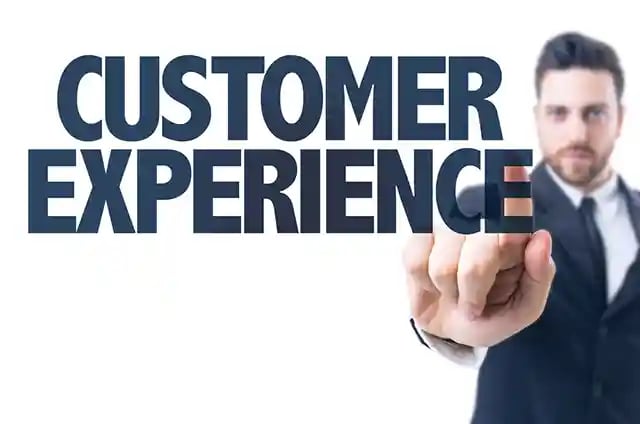Brian Halligan Talk - London HUG | Whitehat SEO
- Home
- Brian Halligan Talk - London HUG | Whitehat SEO
This is a transcript of the talk at the HubSpot User Group (HUG) meeting in June 2019 by Clwyd Probert, CEO of Whitehat an Inbound Marketing Agency in London, talking to Brian Halligan, CEO of HubSpot and Kristian Kinnear Head of EMEA at HubSpot.
Christian Kinnear:
Folks who have been keeping track of our communications over the last number of months and a couple of years have noticed a shift from talking about the funnel to talking about a flywheel. Curious about your thoughts on maybe giving people your version of what the flywheel is and how you've come to that thought process.
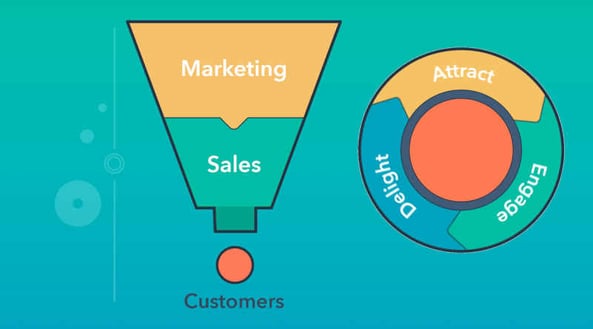
Brian Halligan:
If I kind of roll the clock way back and think of when we started HubSpot 13 years ago, yesterday. And the genesis of HubSpot was my co-founder and I consider ourselves kind of like social anthropologists. We watch how humans behave and interact and we study how humans, particularly B2B humans buy stuff.
And we like to study that interplay between the buyer and the seller in what's going on there.
"The genesis of HubSpot was what we saw were major shifts in that interface between the buyer and the seller."
In particular, what we noticed back in 2006 was that as humans, we were becoming relatively immune to marketing. We were becoming very good at blocking any marketing out and back then it was a new thing.
Ad blocking software
Ad blocker software, spam protection software. We had something called the DVR.
It was nearly impossible to market your way into someone's life humans were immune to marketing at the same time. All of us humans were shifting the way we behaved and we consumed information.
- We went from consuming three newspapers a day to good Jillian blogs a day.
- We went from consuming five television stations a day to 1 billion YouTube stations.
- We went from consuming a couple of radio stations a day, to a bajillion podcast.
There's this massive kind of shift in human behaviour. They created an opportunity, frankly for marketers to transform the way they went to market in a way that matched the way people bought. We call that inbound marketing back then and we espouse that.
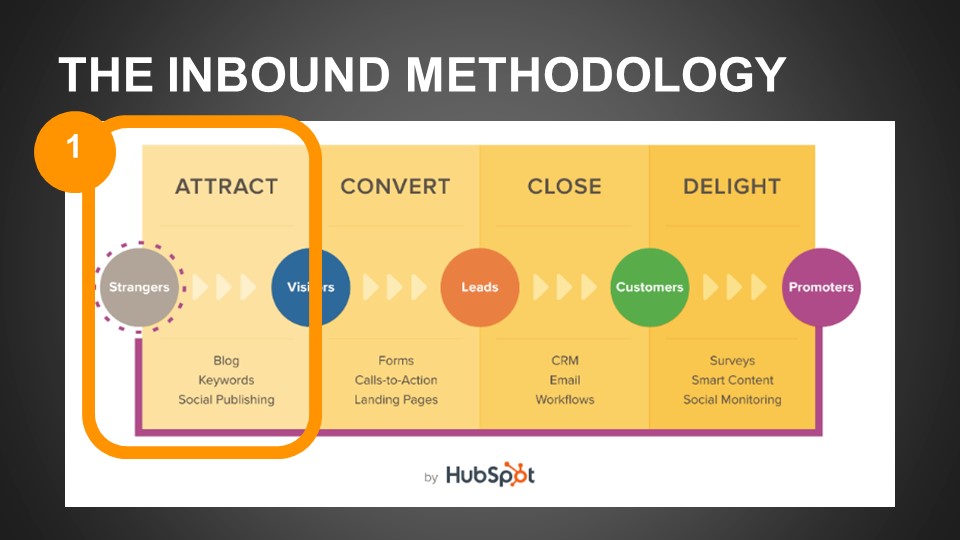
The solution to this was:
- Don't create your TV station. Create your own YouTube channel.
- Don't create your newspaper. Create your blog.
- Don't create your radio show, create your podcast
- Don't rent space on somebody else's asset. Create your asset, and pull people in a very organic way.
Match the way you go to the market to the way people shop and buy and to me back then there was sort of a wormhole or arbitrage opportunity is shift in the universe.
That created a massive opportunity for forward-looking marketers to grow their businesses in a new and interesting way using inbound versus old-school outbound. That was kind of the genesis of HubSpot and how we got going. Frankly, inbound marketing still works a gazillion times better than outbound marketing. It works a little less well, quite honestly than it used to.
Why does inbound not work as well as it did in the past?
And why is that? Why is it not working and workflow as well? But when we first started HubSpot, if you searched Google, there were a few little ads on the right side that were barely see those Google ads in the right side. Now when I search on Google on my phone, the whole page is ads. Same with Facebook, same with Twitter, same with LinkedIn. Everything's kind of become pay-to-play. And so the world has shifted a little bit.
Still lots of opportunities with inbound. But I think the arbitrage opportunity, the opportunity for all of you to grow your business in 2019, 2020 and beyond has shifted.
"The worm hole on the Internet has shifted."
And I think of it around this flywheel idea. And I'll describe how I think about the opportunity with my morning routine.
Brian Halligan's morning routine
When I wake up every morning I wake up on something called a Casper mattress and then I get up and I take off my Warby Parker glasses and I put them on the stand and then I take out my phone and I turn on something called Spotify in a dance to a band called the grateful dead.
I go in the bathroom and shave with my Dollar Shave Club razor, and then I put on my Trunk Club outfit and I take an Uber to work. Now what I think is fascinating about my morning routine, which you would think would be a very boring thing. What's fascinating about my morning routine is those six companies I just mentioned have infiltrated their way every day into my life.
What do those companies have in common and what do you share with them?
What can you learn from those six companies? Well, those six companies are startups. There are new companies that are big old companies or startups. Those companies are growing like a weed. Most of them have north of $1 billion valuation. Many of them are either public or on their way. They're going public. They're all disrupting their existing market. Well, how are they disrupting them? Is it a technology disruption?
Is it not really like we've been talking about technology disruption, our whole lives, tech disruption, they're an experience disruption. That's how we think about these companies. They're experienced disruptors.
It used to be that the company that got its product first to market would win and let the best product, almost always one today. The best products are kind of table stakes today.
"The winner is the first person who got that awesome delicious end to end customer experience just right online."
That's the company that won all those companies I'm dealing with every morning. They have a delicious end-to-end experience. They sell the same products as their predecessors.
- Spotify looks a lot like Apple Music
- Warby Parker, it looks like the rest of the glass companies
- Casper mattress looks like Sealy mattresses
- Dollar Shave Club looks like Gillette
- The stitch fix looks like Nordstrom's
- Uber looks like a cab company.
They've transformed not the product. The products are essentially the same. They've transformed that end-to-end experience to make it right that that is how you build a great company today by disrupting the experienced side, not the product side. It's not about having a product that's 10 times better than the competition.
"It's about having a customer experience is 10 times better than the competition"
That's where the new opportunity is for all of us, including HubSpot.
Flywheel businesses
I think all of these companies are what I call flywheel businesses. They don't think of themselves like a funnel. Everyone uses the follow-up and Sanchez Eus thing.
Let's talk about the funnel for a second. I've been using the funnels that I remember,
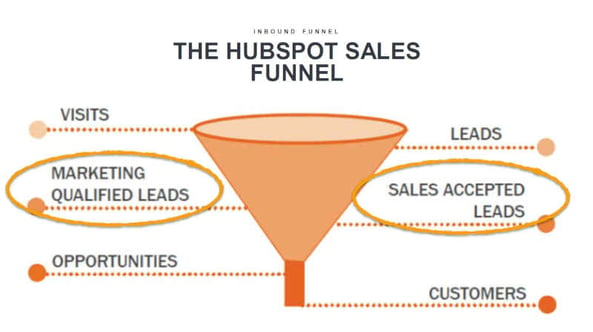
I first heard about the funnel in 1993. I was a sales director at a different company back then, and a guy came in and pitched me the funnel and I thought it was the smartest thing I'd ever heard in my life. This final mirror metaphor has been very useful for all of us for a whole career. It's changed a lot early in my career. This is what the funnel looked like in 1990. Marketing at the top. Sales, most of it sales at all. The leverage, all the power in the relationship with customers. Then a mountain kind of came along right in 2006, 2007 for like 10 years.
It's more like marketing has become more important. Sales are keeping important but different because he had a website. Then you have LinkedIn and you had GG crowd and you had all this stuff out there where people can check on you.
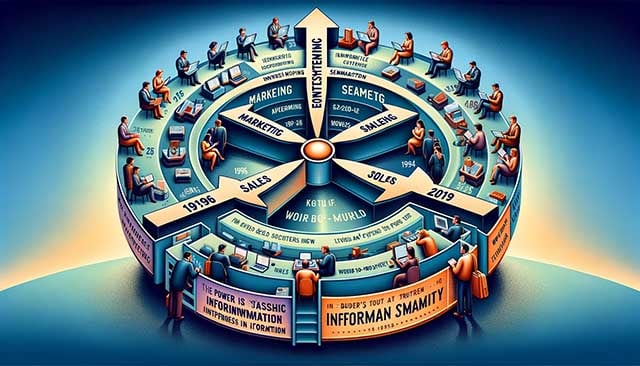
The sales rep was not the only source of information. Information went from being asymmetric to where the sales rep had the information. The prospect didn't. You mean almost perfectly symmetric with the buyer and seller having the same information. It is almost the same time, speed shift, marketing games and power. This is the last 10 years, 2006.
Now I'm thinking of it more like this and it's this flywheel idea. Whereas marketing is here, sales is here and customers is here. Why? Why am I redrawing it? I actually think of these three from 1996 to 2006 seals had all the power and you spend most of your resources in sales, right? 2006, 2019 marketing had power more than sales and more leverage in the relationship. I don't know when the customer has the power.
Now, why is this happening and why do I say this? Well, there's a couple of reasons. One is when they ask people, like I asked you, I may ask you up one more and have a coffee. Why don't you buy more spots? You probably read our blog like that. You probably talked to one of them.
Great salespeople and they were helpful, but the real reason you bought is you used it at your last company or you talked to a friend that used it or your cousin in word of mouth is much faster these days. I mean, just spray it on the G2 crowd. You read the reviews. That's not the only reason.
I think today, especially in the United States, but I think it's a global phenomenon. In the United States since 2016 there is a dramatic lack of trust in institutions. People certainly don't trust their government like they used to, don't trust the president. They don't trust the news media like they used to. They don't trust social media like they used to. They don't trust religious organisations, nobody trusts anybody anymore.
"The world has changed as sort of our crisis in trust happening in the world."
Increasingly, people trust their family friends and colleagues. There's just this distrust happening in the world. And so the ones in customers' hands when they buy is other customers. And so by the Flywheel, how do you get your company to grow in Spain? Invest in marketing. It's still work doing that. Yes, and invest inbound selling, but invest in your customers. To this, these people are the loudest voice inside your prospects when they buy. They do double duty. They gave me money and they sell and market your products. That's what I was thinking about.
Christian Kinnear:
I think what might be going through the minds of people here is you've come up with an articulation of a story in an hour. That's fascinating. And the question I was going to ask you on behalf of people there is, how do you do that? How do you step back?
With a very busy business that's growing at a fast rate? How do you find time to work, work on the business to step back to see the bigger picture rather than just be pulled entity, the operating running of the business?

Brian Halligan:
Personally, there is this tension of working in the business versus on the business that I'm always struggling with. I have on some novel ways and hacks that I use to pop up my lens of how I work. Like once a month I write down my list of eight or nine priorities. I want to do for the month. And I published them on our internal Wiki.
I forced myself to publish those that all my colleagues could see when I was working on them.
And when somebody asks me to do something, somebody wants to take something from their to-do list and put it on my to-do list, which is like your whole day in Slack and inside of email is you're doing other people's to-do's. Once in a while, I like to work on my to-do's and so by writing them down, someone asked me to do something.
I would say no, I'm sorry I can't do that. It's not on my priority list. But if you make an argument, maybe it can make it on my priority list next month. And so it enables me to focus on my top things.
Work productivity tips
Another hack I have that works is I work from home one day a week. And when I say work from home, no meetings, no conference calls, no zooms is just work and it's time to work on a project or a think piece or something, the strategy of the company without interruption. This is important for a couple of reasons. It gets me out of the tactical day-to-day, very quickly responding to stuff and more into midi thinking about things. The second thing that helps because I'm an introvert and I need that time alone with just myself and my dog. Recharge my batteries because I'm with people Monday, Tuesday, Thursday, and Friday, all day with people I get tired.
It's a lot of people time for me. And so having that one day alone helps me recharge my batteries and work on bigger-picture stuff. I'll tell you another weird thing. Everyone dislikes going to their board meetings. We have board meetings once a quarter, like a lot of companies. I like the board meetings because the agenda of the board meetings forces us to pick our heads up and think about the business holistically about the competitive landscape and how humans are changing.
Inbound event in Boston
We also have an annual event at HubSpot called Inbound. I encourage you all to go in every year at inbound Dharmesh and I have to do a presentation and it's in front of 20-something thousand people. It's nerve-wracking. You'll have to say something novel and interesting the root of that novel presentation that we have every year is in this idea of studying that interface, that interplay between a buyer and a seller in a way which we kind of fashioned ourselves like a David Attenborough.
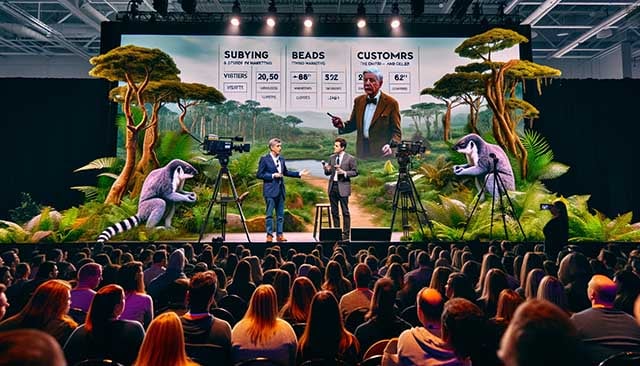
He's really going into the jungle, right? And he's in there. He's sitting in like, you know, some jungle in the middle of nowhere. He's got mosquitoes all over and he's got his microphone in his camera and he's studying how birds mate. That's kind of us. We go in the jungle and we study how humans decide how they collaborate and how they make decisions. And that's the root of how we think about how to build HubSpot, and how to influence the future of the product. And it makes it a little tricky running HubSpot because we want to do everything our customers want us to build.
And historically like we do, probably 50% of the stuff we build is for our customer's earner enhancer requests for customers. But our customers tend not to think about what's happening next and what's happening between humans. And so we tend to build things that push our customers forward and that's been a part of what slows us down sometimes, but it's part of our secret sauce that we're real geeks about this buying process.
Christian Kinnear:
I'm in the same vein of trying to pass some takeaway advice. Things people could maybe ponder themselves and think through back half a step to the flavour. Are there any tips or advice you would give to people who want to move the business towards a wheel is centred business?
Brian Halligan:
I think the one thing that I could do is just start writing instead of drawing everything like this, running it like this. And you could do the right here you could do how many visitors, how many leads, how many customers. You could use the conversion rate of visitors to lead the conversion rate from leads to customers. But the magic is here and what should we measure there? This is obvious visitors, leads, customers.
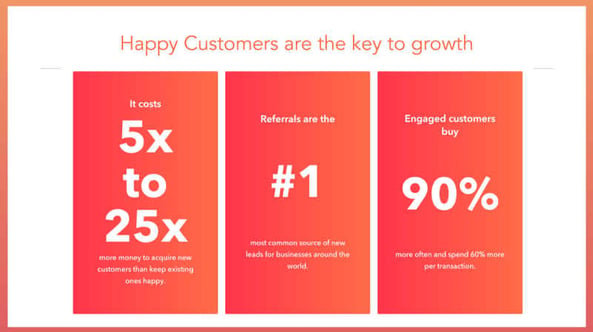
Why can't we measure happy customers and the percentage of happy customers to others? And so the thing we obsess about here is something we call net promoter score. And we surveyed, we'd probably surveyed a lot of you on a scale of one to 10, how likely are you to refer HubSpot to a colleague? And why? And we learned a lot from those surveys and then we break it out and we say what percentage of our customers are in nine or 10 are happy and telling other people about it, what percentage of our customers are not.
We're trying to get that ratio up as fast as we can. I think if you want to get your flywheel to spin faster, you want to increase your percentage of happy customers out there and get your word of mouth up. These supports are important, but you'll improve these by improving them.

I have another class and for it not enough whiteboard relations. So the rest for a moment is customer-centric once again. All of this, folks I think may be aware, we recently launched the customer code. We went through the exercise of building out a report card for ourselves to lead by example and thinking through the thought process of how we might build a customer code. We're applying it to ourselves. I'm curious as there are lots of customers here who may have the same thought process, can you share to the point it was like to complete that report card? Was it surprising? Was it not? Was it humbling or just get a sense of that?
The HubSpot customer code
We come up with this customer code, which is like a report card for your end-to-end customer experience trying to get something that's delicious and light. We get Dharmesh and I filled it out ourselves and I think we gave ourselves 7.1 out of 10 and then we had a bunch of customers fill it out. We got a 6.7 out of 10 and so it was clear we weren't nearly as good as we wanted to be in the area in which we had the most pain in our customer experience as we took our customers from, they had never heard of us too. They've been a customer for three years where the jagged edges in that experience, much of them I like to refer to as this idea of like your org chart is showing that as you move through your experience with HubSpot, there are jagged edges as you touched different parts of our organisation and get handed off between different organisations in their awkward and you feel them in, it slows you down and they're not delightful.
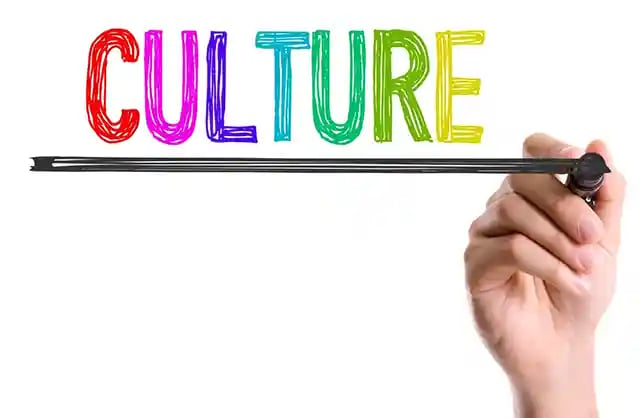
What we've largely done, and I think everyone does, is design their systems in their organisation internally and then think about them journaling. However, how you design your systems in your organisation from the customer is tricky to do. But that's how we're working on changing HubSpot we don't want people to see our org chart. We want to feel that experience to be much smoother. I also just think in society today, and it started with millennials, but it spread to my generation and beyond. It's humans no longer want to talk to humans. It's sad. It's a sad state of society, but they would if, at all possible, people want to be able to search on Google and find the answer, search on your knowledge base, and go to your Chat Bot in the last course of action. They want to pick up the phone and talk to another human being.
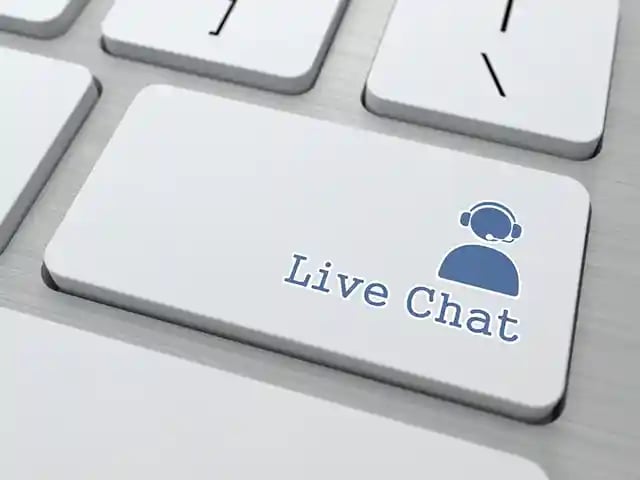
It's just an inefficient way to find information talking to other humans. It turns out, and so we're trying, when we look at our customer experience, we want to make the first line of defence humanness. We want you to be able to self-serve and find your information. If you have to talk to a human, we want to make that easy to find and easy to use.
But when you talk to that human, we want that human to know exactly what's going on, to have been tracking all your activity with HubSpot to have all the information they need. So they hit the nail on the head when they have that conversation and don't have to hand you off from person to person. And so we're rethinking our customer experience to make it a delicious one. I think that's an opportunity for us relative to our competition to differentiate and compete and win in the marketplace.
Christian Kinnear:
I'm going to switch gears. I know we're just coming up on the first time it was closing, so I'm gonna switch gears a little bit if you don't mind into a little bit of products. So a bit HubSpot-specific products if you don't mind. Just to get your sense again, we're in the middle of a journey right now of moving from an APP to a suite. There's a total suite to the platform as well. And maybe help us understand that.
Brian Halligan:
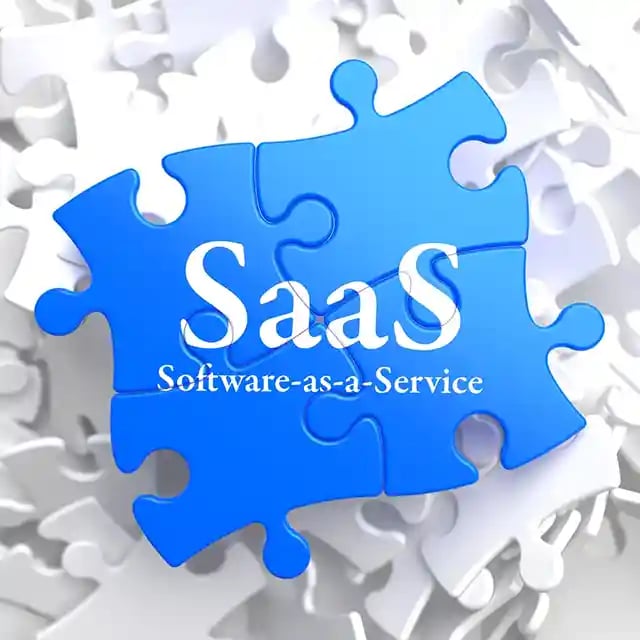
I think of why that movement. And so we're moving. We started HubSpot as a marketing application lead generation software company and it's probably obvious now why we're moving from the marketing, sales and service in a CRM platform all wrapped up in one. And the reason is we just feel like the opportunity for all of you is not just in lead generation, but crafting these nice experiences and these experiences are hard to craft when you're using a disjointed platform.
We want to create one easy user face, one bill to pay a one person to call if he gets stuck. We want to create one system to help you craft that is that experience. So that's the first one we're up to is moving from APP to suite. It's going well.
Marketing Products is still growing. We have a nice sales product that's doing well. They have a pretty new service product that's doing really well in what we're noticing. When people come in to buy HubSpot, they used to buy, you know, are we going to buy salesforce in HubSpot and mix them? More and more people are saying, hey, we're a salesforce shop or a HubSpot shop in. We're going to use it for marketing, sales and service, which you have great with us.
"There's another shift going on underneath HubSpot."
That's kind of a shift from this idea of a suite of tools to more of a platform type of solution. That is also sort of an interesting change going on in the society at large that when you walked into a company 10 years ago and let's say the company had a hundred employees, they maybe had 10 different applications they use inside that company to manage the business. You walk into a company with a hundred employees today, I mean they have 150, 200 different SAS applications that they're stitching together to create solutions and solve problems. There's just an explosion of SAS applications inside of companies and I think that's good for a long time and HubSpot, we sort of fought that and we said, no, just use HubSpot. Don't use Google Analytics. Don't use MailChimp, don't use drift, don't use your name.
HubSpot as a software platform
We kind of flipped to being much more open and saying, gosh, go ahead and use whatever you want. Let's make it easy for those companies to integrate into HubSpot by opening up our APIs and making our support well.
Let's have a really good partner program and let's treat them all as partners, not as competitors and let them all in. And so what we want to sub-spot this far to be that backbone system for your front office to create that great experience. And then we've all your other applications into that experience alongside the HubSpot application.
That's sort of the motivation on on platform. If you look at a year ago there were about a hundred different software companies that built integrations to HubSpot and today it's about 320 different software companies. Building Integrations Plus is great. Companies like Zapier, are improving their solution on how they integrate into HubSpot. Our APIs have gotten very good, very high quality and very broad. So we're making a lot of progress on the platform side.
Christian Kinnear:
Last question and then we're going to open up to the floor. So if you have questions, please prepare them. And is it to the future? So curious as much as you can share your, future of the product, anything you see coming that's picky, excites your stuff.
The future of HubSpot
Brian Halligan:
We've invested, and we've increased our R&D budget by 50% for the last three years. So we're cranking on the product side. We've released a lot of products in the last two years. But we've gone from a marketing app to this full suite.
"One of the things we're working on is making that sweet better."
HubSpot enterprise products
So for example, we have a sales enterprise product and a service enterprise product. They're good. They're not great yet. So a lot of enhancement going into our existing products. All three product lines are going to get a lot better, a ton of investment is into making our applications faster for the end users and making the user experience better and easier for mere mortals to use. We want to make that front end of HubSpot to be consumer grade. It's like a consumer APP.
HubSpot custom objects
And then on the back end of HubSpot, lots and lots of work on platform APIs, lots of work on custom objects. Lots of work on reporting and analytics going on. And so a tremendous amount of work inside of HubSpot going on the front end, being more consumer-grade faster, more usable back, more enterprise-grade or Apis, custom objects, reporting analytics. So tremendous amount of exciting work going on at home. So I've been at 13 years. It's, it's the coolest time I've been at since I've been in HubSpot right now. It's really fun. What's going on?
Christian Kinnear:
Lovely. Yes, thank you, Brian. So hopefully in the last 30 or so minutes, we've given you a whistle-stop tour of lots of things that are going on inside HubSpot between the change of methodology, the shift to double down on customer-coloured and customer-centricity and a lot of product development, both current and future that's coming down the track. So hopefully it's given you a flavour of what's been happening inside the business over the last number of months and years. I'd like to open up the floor to any questions we have from folks. It's been here. I don't think we have a microphone to be. We can shout out anything. So if people want to shout out a question, I'll repeat it when we can take this bit here.
Audience:
I liked what you were saying about the school. We make sure that we use a two-part question. The second one is that we as a BTB company have a particular challenge in that you talked to one group of people who wouldn't sell it and you have a different group of people that you're dealing with when you're servicing them. So the introduces a complexity into the net promoter sorts. So you've got your thoughts on how to do
Brian Halligan:
We have built a very lightweight net promoter score into our service hub product.
And so if you're using Service Hub, you can check that out.
If you want to do advanced stuff as nicely, probably already have an integration of HubSpot. I've heard their name around, you know, yes, they have an integration yet I've heard their name. If you want an easy one, free inside of the service, if you want a more complicated when you can go through them. We had the same challenge by the way as to who makes the decision and who uses it.
And I'll tell you something very interesting and something we're trying to solve when we haven't is we have a situation, we call them the n plus one user. So the person who buys HubSpot first implements it, and that's the end. And let's just say it's a director of marketing and set up a company.
That person's net promoter score is sky-high. They love it, they're evangelising it, they know how to use it. The further you get user-wise from that end, the lower that net promoter score is. So you're the 75th sales rep who implements HubSpot. Your net promoter score but it's nowhere near the excellent where the top one is. And so we're spending a tremendous amount of energy on the onboarding flow of the n plus one.
- How do we get, how do we get videos in front of them that are appropriate?
- How do we give them a little bit of information, not overwhelm them when they lend it in Atlanta in the portal?
- How do we get chats set up? So the first time that person comes in the portal is a friendly, helpful support rep saying,
Hey, do you need some help? And then we'll circle in humans in some cases where it makes sense on big accounts. So there is a huge disparity on NPS between those that we're working on as well. So misery loves company.
Clwyd Probert:
I've got a quick question relating to that because we get asked a lot when we're HubSpot, I can say there are other agencies. How does HubSpot look at the agency world in terms of delivering on this vision of helping the implementation of this, getting an understanding of making it a successful partner is key to HubSpot growth or are they peripheral to it?
Brian Halligan:
No, they're right in the middle of it. So there are two ways people tend to use HubSpot. It's been about 50, 50, half our customers, get HubSpot and they want to do it themselves. They want to build that capability 100% internally themselves. And they go through all training, get certified, they buy our implementation, they get up and running. Another half uses agencies like Whitehat. It's a little bit of doing it for me, mixed in with do it yourself. Ironically that number hasn't changed in the 12 years since we started the agency partner program. People love our partners, their strategic part of our business. It's a core competitive advantage for us. It's not an afterthought by any means. It's a core part of why we would, by the way, I'll answer it. You didn't ask me this question, but I was hoping you would.
What is HubSpot's secret sauce?
I talked to marketers and salespeople and go to market people a lot about, what is HubSpot's secret sauce. What is it about marketing that works and we're not good at, we're not great at everything? We're great at a couple of things and we're okay. We're good at a bunch of stuff. We're great.
It's some hard things we are great at and you guys are Whitehat, you're great SEO people. But we are great at SEO. If you look at the number of links to the HubSpot site is insane from very high domain authority sites and we set up our pages and such in a way that is very Google friendly and we get millions and millions and millions of branded and non-branded visitors every month from Google essentially for free. And what I like about that is it's permanent, I think of a marketer as you get at as a business, you get assets on your balance sheet, you've got cash, you've got inventory, you've got machinery.
As a marketer, you've got assets on your balance sheet, links to your website, pages on your website, and things like that. Links to your site and pages on your site are permanent marketing assets. The quality of those assets can go out in the return on those assets. It's a very long-term patient gain that we've been playing for 13 years and it's paid off incredibly well.
"So we do very little advertising, we just don't have to."
The second thing, we are x and that's, and that's content marketing/SEO. We're very good at the second thing. We're excellent at this agency channel. It's unique relative to our competition. It's very hard to build, it's sustainable. If our competition wants to steal you as an agency, you should certainly go, but you can tend to be loyal because we've been working together for a long time. You've got a whole book of business built around us. Ironically, I think our agencies like yours are more loyal to HubSpot oftentimes than our employees because their employees can go and whatever they learned at HubSpot, they go to the next thing agencies. Stuck with us whether they like, whether you like it or not, you're kind of talking about this.
HubSpot marketing agencies
And so I love meeting with agencies for that reason. I mean it took us a long time, a lot of thought and a lot of sausage-making went into the program. A lot more work to do by the way. We're starting to get very good at freemium. Think about this freemium giving away the best free CRM. Somebody comes in, how do we coach them through it, get them up and running and then sell them more stuff?
Best free CRM software
Freemium is a very hard thing to do. Your product's got to be very light, very fast, very consumer asks. I think a year from now that will be one that will be a core hard, really hard thing for competitors to unseat. That's coming. Freemium goes across all the different hubs.
Is that a possibility in the future? Yes, absolutely. We want that to look a lot more like the other hubs down the road. There is a freemium now in the same as you can set it up on your own and everything, get the website built before you charge, but there's no premium. That's fair. Eventually, we'll do that. That's the only missing thing.I agree with your business in a box. Then you've got to pay for the website. We want that. If I'll tell you about the content management system. That's interesting.
HubSpot CMS
We've been building that content management system for 13 years, a long time, we can be with WordPress, right? And just over the last three or four months, I'm concluding that we are better than WordPress is the first time. I've thought about that in a long time and I got that from talking to a lot of our partners who used to do WordPress and now do HubSpot. And I think it's just the process of we've got an 80-person team on it that's grinding on it, listening to customers and building stuff. It's also because we've opened it up to let developers do more stuff.
We created a product object in there. They can interface with your website. There's a lot of cool stuff that's coming. They're in. So I want to move, eventually, that content management system from kind of an add-on without a freemium to a full hub. I don't know when we've got a lot of work to do, but at some point, I'd like to do that. I feel like that in and of itself is a key part of the customer experience you have to get right. And I think once we build out the back end, you have all your product objects in HubSpot and all your pricing and packaging and so on. So all that stuff's in the HubSpot connecting all that stuff with your website is going to be insanely powerful to do that question.
We've been a startup since the beginning of testing innovation, which is pretty different. We produce large-scale commercial conferences and we now looking to roll out from a few to 20-year-olds, a little hundreds of workflows and lists lots going on. And we love this kind of way to have just had that blueprint so we can just replicate it, tire on the conferences. Is there a way in which that could potentially happen? In some states in the future when you can put the key data for each event, it kind of rolls up workflows.
HubSpot for event management
Is it an event management product to your description or not? No. We staged conferences. So we create the agenda real quick so the market agent can do the whole thing. I read them. He comes from attendees and sponsors. Do you want a cookie cutter? So we want to, it's the same topic area. So we're going to the Geo Clinton event, right? So we speak. It's not that easy to do that today. I agree with that.
I will say that something we know is that by the way, HubSpot, one of the things I love and hate about HubSpot is we're in the top of the second inning of using a baseball analogy.
Like there's so much more, it's so powerful and so great. It's so much more to do. There's something inside of HubSpot that I've never liked and it's the idea of, it's very focused on one company, the one division, and we've never been great at, we have multiple countries, we have multiple divisions. We want to clone things across these things and tweak them. It's a big initiative inside of HubSpot right now to be able to do that stuff and do reporting across it and campaign reporting in a very thoughtful way. That's something we're working on is the way we describe it as a whole differently. The way you describe it.
I'd imagine over the next, like between now and inbound, there'll be a lot of progress in that type of thing. It used to be for each of those events you'd have to buy a different URL, which gets expensive now. We want to create it so you can do it all inside of one. You were all, you can do reporting across all of it and make it quite tidy. That's a that's a big initiative inside of HubSpot. Come to me after. I'll get you more information on it. I'll connect you with the product manager working on it.
Audience:
They fly with very much talks about the customer essentially briefly about B2B. Just advice in terms of the B2C company. You want clients to do word of mouth, but how have reading a sentence clients to effectively do word I was under the realm of the wish. And what would you advise?
Brian Halligan:
Yeah, I think this flywheel idea, is something that B to C industry is embracing in a big way. Uh, and if you're not doing it, I think you're kind of screwed.
My examples of Casper mattress of Warby Parker, Spotify, Dollar Shave Club of stitch fix of Uber. You could go from the away suitcase to Peloton, to a class pass to every industry that seems to be getting disrupted in the B to C world by one of these, I call them experience disruptors. So it's like you gotta go now and fix it and you've got to build your customer code and give yourself a harsh score and then you've got to build your flywheel. And it's like, how do I get the friction out and how do we make it easy to buy and get it to move faster and get the humans out of there and make it a delightful experience?
How to remove friction?
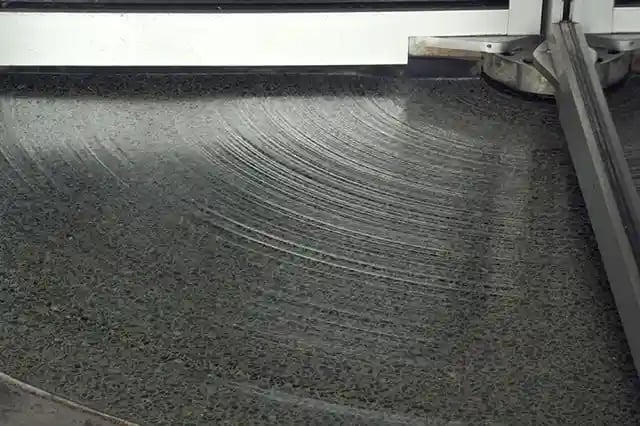
So I think that's now where I think B2B, it's just started, um, in B2B, as I look at Zoom as a company versus Webex.
They do it well, the product's a little better. Uh, the experience is better. It's a freemium. I, you look at Slack versus, you know, whoever was before them. You look at Lassie and, and what they're doing, you look at, we work. So many of the new companies that are growing on the B Two B side are doing it, not with much better products, but they're doing it with much better experiences that match the way people like just like you want to buy stuff. And then they get into the end users and then they spread. It used to be the, it was the decision maker and bead B2b and then, it was the gatekeeper. Now it is just, wow, they're just trying to deal with all the demand from the end users who are using this stuff. And so if you're in B to C, I'd say you got to get on this tomorrow before somebody else does, and it's, it's a little bit of a winner-take-all all game. Like the experience disruptor who does it first? It's hard to catch up. Let me, no one's catching up to Amazon.
Audience:
One of the things that you've said that you said that people not want to talk to people anymore, I'm maybe pushing back a little bit on that, is that when they do they end up with such a bad experience because that person on the other end and doesn't know their history, it doesn't mean they don't empathise. They could, they can't connect. So when you connect all the dots with systems and that whole thing, then that experience of actually talking to a person comes back to being an invaluable thing again. Yeah. So maybe that trend will level off.
Brian Halligan:
It could be. I think what I like about HubSpot is inside of it, you've got one of those, that timeline of information. And so you know, okay, I've got Xyz Corporation, there are customers, here's how many people in there, there's how many times they hit your website. Here's what version of the product here all the uh, calls they've had before.
So before you pick up the phone and talk with them, damn, you just know a lot. Um, and you're having the conversation very quickly. You can kind of get in there and make some progress. So that's one thing I think is key for all, whether you're using HubSpot or another system, getting that unified view of the customer's key.
Tricky if you're acquiring different businesses and growing up the second thing I would say, and this is controversial, a lot of people disagree with me is historically what companies like to do is have what I call eye-shaped people versus t shaped people.
T Shaped people vs shaped people
People are very good at one thing and maybe they're good at fixing certain types of bugs in your software. And then there's another person who's very good at doing billing issues with your software, and another person is very good at training somebody with yourself or another person who's very good at whatever it would be.
You get very granular about each skill set inside your company each skill set goes very deep in that they're fantastic at it, but each person needs a handoff to the customer. I like this idea of a t-shaped person and the t shaped person may be, may not be the best in the world and all that stuff, but they grew up in one of those things and get pretty good at the rest of this stuff. And that's a customer I'd rather deal with.
One t-shaped person who's very good than seven. I shape people who are excellent and so I think there'll be a bit of a shift there. I also just think, this is not a this isn't good necessarily for humanity, but I think customers want automation. They like, for example, we noticed that we have chat on every page on our site, and we have chat inside your applications.
"The weirdest thing about chat that we've noticed is humans chat much more regularly and freely with a Bot than another human."
I think just more and more is more and more people like what they want, they expect and want automation and automation. It works 24 hours a day, seven days a week. It works 365 days a year. It doesn't make the stakes, it doesn't go through training. I think finding that nice combination of automation and super helpful t shape humans, is the magic in the future.
Audience:
I love the concept of the flywheel. But if you were to start again today, I'm couldn't leverage the existing customers. How would you go about finding your first hundred customers?
Brian Halligan:
How to find your first 100 customers
I just tell you how we did it and how to spot our first hundred customers.
We're all friends of mine and we have a list.
When we got to 200 customers, we had to list customers we didn't need to have a CRM back then. It was the customer name, FOB friend of Brian, yes or no, when the list got some more no than yes. Everyone's like we're just starting to turn into a real business because people are finding us by a word about the whatnot. That's literally how we did it. And so our first wave of customers was friends of mine. The second wave of customers was content marketing.
Content marketing
 We just wrote a lot of really, we spent a lot of time thinking about and creating high-quality blog articles in the way we did. That was every week.
We just wrote a lot of really, we spent a lot of time thinking about and creating high-quality blog articles in the way we did. That was every week.
My cofounder and I, created two a week and we competed on who can get the most traffic and leads from the blog articles. And part of what informed HubSpot was we got good at it.
The competition was very healthy and very productive. We would want to beat each other with the next article, get more visitors, more leads. And we get very clever with SEO because of that. And we get very clever with social media, how could we get found in social media? And we built all of that knowledge in our head basically into the software.
A content marketing platform
And that's what helped the early versions of HubSpot become what's kind of a content marketing platform. So a lot of people draw it like this. I got the bark bark fines, and it broke the bar.
Okay. Some people draw it like this, like in the early days, you need to pull, this is a funnel stuck on your five yet that's cheating. But that's how people, does that make sense?
Audience:
Hi Brian I wanted to ask about being able to buy something just on the website. What do you think is the most important product consideration when maybe switching or trying out that? Not all products are made to be just sold and used by use of the loan.
Brian Halligan:
It's gotta be easy to use. So easy. And maybe you've got some big cup like that. You pick up a pretty big down. It's got three hubs and if you have the three enterprise versions, this is a lot. That's a lot of functionality in there.
What we try to do, and we don't have this nail that all, but what we try to do in our freemium is give a very thin amount of software that is very easy just to discover in use. In the key is you go through the steps, you give us your username, you give us your email address, you give us a couple of pieces of information, we drop you in the application, you watch the video and you go and we watch like per second the drop off of usage, literally like per second.
And what we want is somebody to get in there and just be like, I like using this. And then Bam, they invite a friend and it goes like that. Not certainly not like that for everyone, but we have a curve that looks per per second and then per day.
And we're looking at if a hundred people sign up of those hundred, how many are active users? 30 days from that. That's a really good way to measure it. We watched the drop-off and most of the drop-off is in the first five minutes, like 80% of the drop-off. And then there's a little bit of drop-offs since then and we're just every month we look and we're trying to move those curves up. And so I would just say ease of use. How do you take a little piece of your product and offer it for free?
Christian Kinnear:
I might just add an anecdote to that as well. To dumb it down for me, they described it as parallels with our content marketing play on our product play where you can produce any content if the quality is poor, it doesn't have any effect at all.
And it's being brave on the product side to decide how much value a product even gives a giveaway and it has to be valuable. The conscious be a very slim or non-valuable product offering. People will see it as the same with content and say this is a piece of content itself, with almost no value.
"So that give value before you expect extract value."
That equation of how willing enabled your article, where that valuable component of your product. People say you've very authentically given me stuff I can use. That's an important balance as well. I'll give you one more, two more, two more little tips on this.
Brian Halligan:
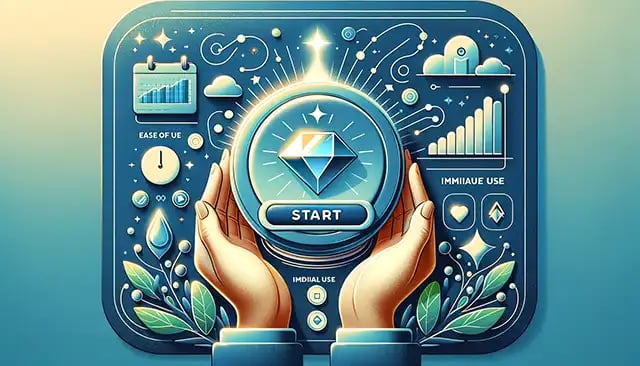
There's an expression we use time to wow. It's like, well how many clicks has she gone in before? It's like, that did something cool I didn't expect. And then there's another constant of the wow-to-work ratio.
How much work did you have to put in before something magical happened? When I think of Google, I go to the Google search engine, I put in London weather, Bam. That was very little work. It's the wow to work ratio is strong for something like Google, how much value you can get out of that? Twitter is kind of like that. You give Twitter a couple of pieces of information. Wow. It does a lot of cool stuff for me. And so time to wow in the lab-to-work ratio is key and freemium.
Audience:
Question from boss Jen. Essentially a lot of complex information for that too. With all of these blogs and there are lots of competitors out there people are less likely to want to read this content to consume it a different way. Sort of visualise the future of content consumption.
Brian Halligan:
Yes, I would say I'll give you a couple of thoughts on content. People don't like to read.
"Humans are lazy"
People like to watch videos and to listen. And so the extent you can create a video blog where you put your handsome face in front of a camera once a week and have a whiteboard behind you and talk about what's happening in the industry or product, whatever it is, I don't know what your value prop is, maybe geek out about it.
I think that potentially is a better medium for attracting people. It's certainly unique. And it's not difficult or expensive. And then the podcast is the thing. It's not going away. I don't know if you can explain your stuff by a podcast that it's something that needs diagrams and stuff like that, but I think podcasts are real arbitrage opportunities today.
If you're in a really niche industry, probably no one else has a podcast, but you're in a really niche industry and there are already 15 blogs, there are probably no video blogs and it's probably no podcasts. I would think about it.
Audience:
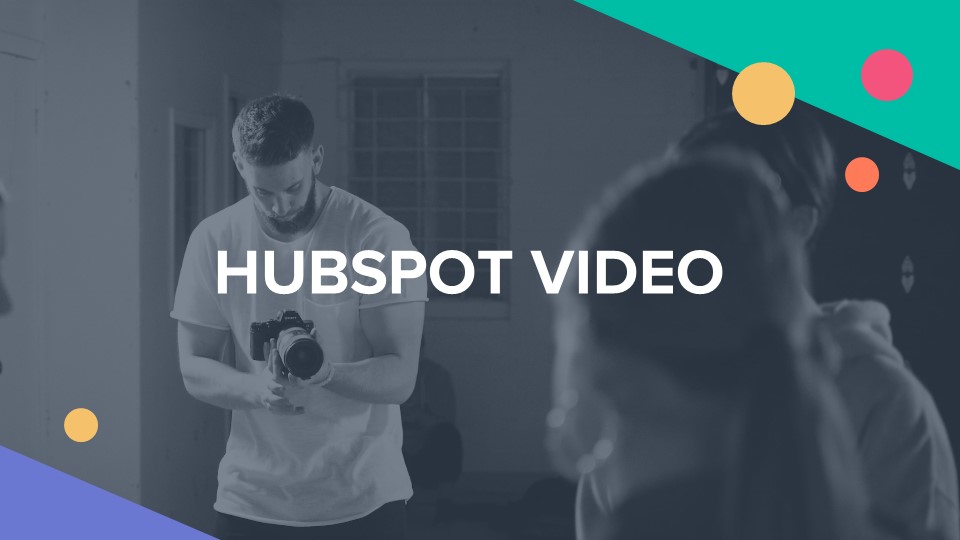
I would just add to that, do everything right. It's true. People love video to watch videos, but sometimes they might want to share something. They might want to download something. Google still isn't as good as reading videos. Is that reading text? Yeah. So re-purpose content in multiple different ways. Chop it up for social media, turn it into blog posts and white papers and outreach.
Brian Halligan:
I just built on what he said on the content side. It used to be that you could kind of create any content and just clog the search engines and you will get found and it works. The search engines, get smarter every, like every second they get smarter and they're starting to get good at quality over quantity.
"Quality really matters."
So instead of before you spent half an hour writing, you spend three and a half hours writing seven blogs or articles and do one a day over a week, I think you're better off. Now spending three and a half hours on one is riskier, and making in-depth and high quality. And I would have that blog article out in the wild. I wouldn't get it and I would put chat on it.
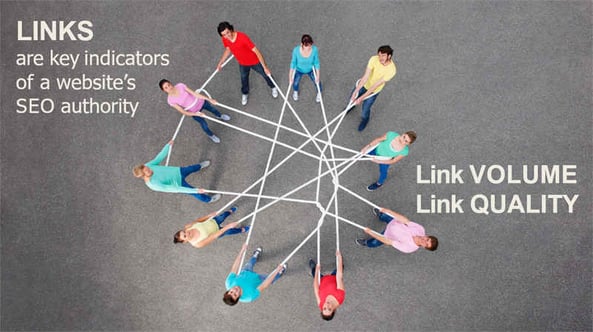
Audience:
You mentioned the crisis in trust, the last discussion and are those, you'd be saying people automation to people. What does trust in people have no future? Because you want the trust to be automated. I sorted it for Valentine's Day. A young couple bows are tweeting each other opposite side of the table. We're not even talking. So I mean what role do you see people have, can trust that?
Brian Halligan:
I think people do trust each other. I think people trust their friends and they've trusted their colleagues.
Who does a HubSpot user trust?
Let's say your HubSpot user is in the audience. I think they probably are putting a grain of salt on what I'm saying right now. It's just the way the world is. 10 years ago they probably wouldn't have put that grain of salt down, but they put the grain of salt on. I think they're much more likely at the coffee hour to trust the person who there's having coffee with it. They realise they both use the workflow tool inside of HubSpot incessantly and live inside of there. I think that person in a way is a lot more credible than I am the creator of HubSpot. And I just think my credibility has gone down.
Christian as a salesperson's creditability abilities grind down.
The HubSpot Trust Index
I just think humans trust in any institution, any large organisation, it feels like it's falling. We track this kind of stuff and when we track it over the last three or four years. We call it our trust index. And the trust in marketers has gone from 6% to 3% over the last two years.
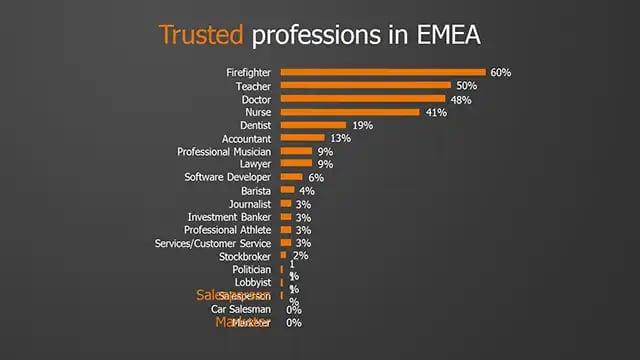 The trust and salespeople has gone from 3% to 2%, and the trust in colleagues has gone from 50% to 69%. I just think there's a shift in society going on and I think our governments are largely the cause of it and sales and marketing are just part of that thing that's going on.
The trust and salespeople has gone from 3% to 2%, and the trust in colleagues has gone from 50% to 69%. I just think there's a shift in society going on and I think our governments are largely the cause of it and sales and marketing are just part of that thing that's going on.
Audience:
With referral-based marketing, at this inbound driven approach to business and hiring talent and recruiting business to your organisation. Where does that leave the role of sales?
Brian Halligan:
Sales is still important
I think sales are still important. I think sales is its part. I just think the role is different. I was a salesperson when I started my career, and I remember how I would sell it like it was in the 1990s. I would cold call into, I sold CAD software.
The computer is designed as a cold call to the VP of engineering. The VP of engineering had a phone on his desk at the time. People don't have phones on their desks and work.
The VP of engineering didn't have a caller ID. So he picked up the phone and had a chat with him. It was always a hand back then, times have changed in a good way on that front. Have a chat about it and then email him a bunch of specs and brochures and then he would call me because he would need more information and then if you wanted anything. If you wanted more detailed product information, I had it.
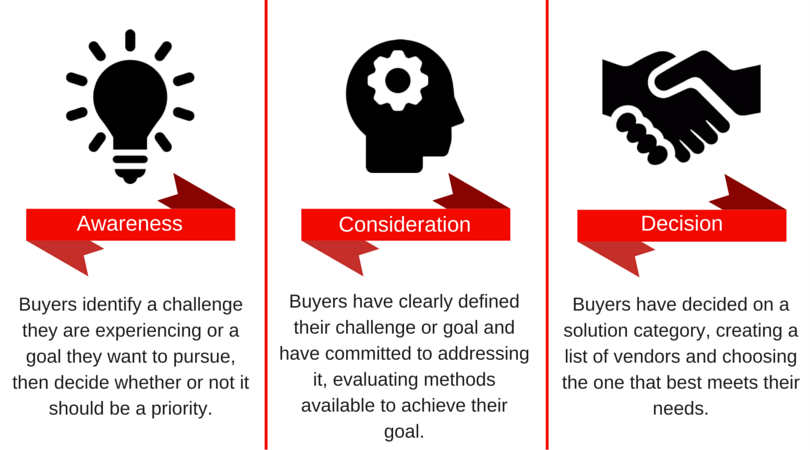
If you want to talk to my founder, I have it. If you want to talk to reference I, there was no place for him to find any of that stuff.
- There was no website per se.
- There was no G2 crowd
- There was no LinkedIn
- There was no Twitter, no nothing
I was the sole source of information. Nowadays, the sale doesn't start with somebody calling into that person.
"The sale starts with a Google search typically"
But when I would argue the salesperson gets involved later in the process, particularly if you're selling something complicated like a wireless area network.
That salesperson is someone who is answering the questions that the website can't answer. That salesperson is crafting the solution to something complicated in their business. Understanding that person's business, that VP of engineering's business, understanding their business process deeply understanding your products and crafting the solution for them and then bringing it across the finish line and ensuring they're successful.
So I think the role of the sales rep as a cold caller as very aggressive as old school has changed into a helper educator vision mapper. I think the sales rep has a really important role. It's just changed.
Christian Kinnear:
I might just add to that as well. And we're just about to wrap up through the eyes of satisfaction in the business that's run through a funnel through the flight. The awareness of the role you play in your future destiny. I think as much more stark now, and by that I mean the old world of that funnel, which is a unidirectional saying to get a lead, a prospect by converting it into a customer and handing it off to somebody else. And that's a one-directional flow.
Our thought process in this as sales person mindset for the longest time and now knowing that if I do the right thing in my part of this, the flywheel, this customer will be happy, not just because our service team will on-board and service them well, but the whole experience would have been a happy experience that they ideally will buy some more from me.
They'll come back around and I'll hopefully see them again on the next iteration of Fly Bill and much more importantly they go to market and say what a great experience that was. There's an NPS question is NPS during the buying process or later on?
Should be both.
So any customer saying what a wonderful way to find them too to solution solve, to get on board to purchase and then and get value from SAS person realises if I'm smart, I have a set territory or book of business or an industry that I own. I want to become famous within the industry for having the best experience. And if every customer brings through my fly rail, goes out and tells others about the experience, that can only be good for me as a salesperson. And we are a little focused on our number and our achievement and attainment.
I say people are wired so, but that appreciation is much more now than ever before. So depending on the business, in that same piece of the sales cycle the procurement officer of the pure mud role of how and when they negotiate the deal, if it's purely that negotiation lens, has to be the same. I think you can't dismiss anyone in that sales conversion part of the process.
But if the original person is sourcing the product and wants to solve the solution to the problem that they have if they're happy. And I think predominantly my perspective and emotive purchase that there's a problem to solve or an opportunity to seize and solution to gangs that I think procurement is to come in and make sure that they get the best possible deal for that. So the business person is choosing to, to solve their business with HubSpot. I think the procurement person some that deal that has to be made.
Brian Halligan:
I've seen procurement's role change a lot.
It used to be that the first by of a given product would go through procurement and most industries and I just think that the modern businesses that are growing like inside of HubSpot. I can just tell you how procurement works procured.
So many of the products are purchased by the end user first and maybe there's a freemium. Maybe there was a trial, maybe there's a cheap IOM and they'll buy something.
Like we have 1200 different SAS products inside of HubSpot until it gets to a certain number of users or a certain price procurement. It's just too much. Procurement has to let it go.
And then when it gets to a certain amount, and I can't remember what that amount is. It goes to procurement and then they craft the contract that's custom for us, certain things we want and they craft terms and conditions that we want. And so procurement is typically involved, it's a little bit like sales or involved later.
They can't keep up with all this stuff going on and are just clicking through all these agreements online. But at some point, if it's a big bender strategic vendor, so like when we bought G-mail, when we bought Slack, when we bought Zoom, when we buy everything we buy, starts with end users and procurement eventually, puts together a contract and special discount terms and stuff like that.
Next steps
Book your place at the next London HUG:

